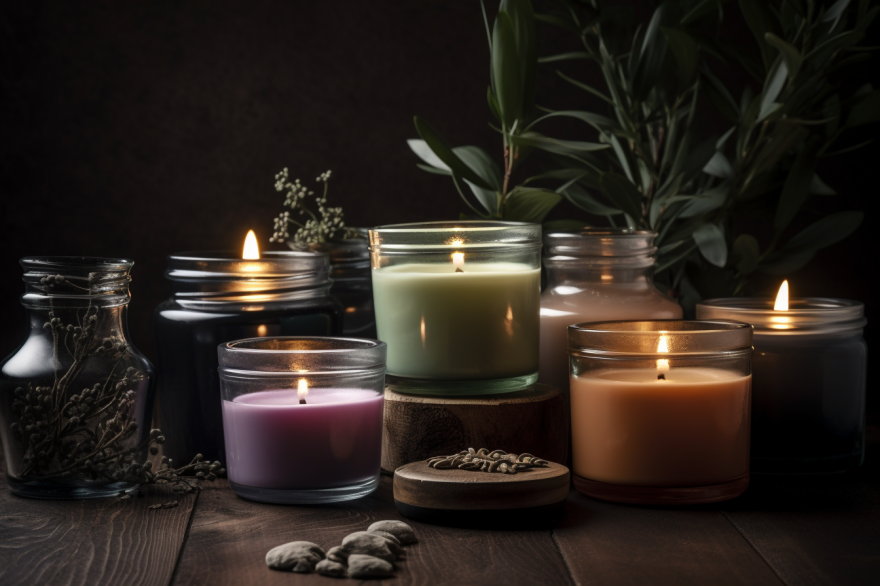Introduction to Soy Scented Candles
Soy scented candles have gained popularity in recent years due to their eco-friendly nature, long-lasting burn time, and excellent scent throw. These candles make a perfect gift for friends and family or can be a delightful addition to your home decor. In this article, we'll guide you through the process of making soy scented candles at home, discuss the benefits of using soy wax, and provide tips for personalizing your candles.
Benefits of Soy Candles
Eco-Friendly
Soy candles are made from soybean oil, a renewable resource. This makes them a more environmentally friendly option compared to traditional paraffin candles, which are derived from petroleum.
Longer Burning Time
Soy wax has a lower melting point than paraffin, which means it burns slower and lasts longer. This provides you with a better value for your money.
Better Scent Throw
Soy candles are known for their strong and consistent scent throw, ensuring your home smells wonderful throughout the candle's life.
Necessary Materials and Equipment
Ingredients
Soy Wax

Choose a high-quality soy wax specifically designed for candle-making. You can find this at your local craft store or online.
Essential Oils

Select your favorite essential oils or fragrance oils to create a unique scent for your candles.
Coloring (Optional)
You can add color to your candles by using dye blocks or liquid candle dyes, which are available at most craft stores or online.
Equipment
Candle Containers

Glass jars, metal tins, or ceramic containers are all suitable options for holding your soy candles.
Wick

Choose the appropriate wick for your container's size and the type of wax you're using.
Thermometer

A candy or cooking thermometer will help you monitor the wax temperature.
Double Boiler

A double boiler is essential for melting the soy wax without burning it.
Step-by-Step Guide
- Prepare your workspace by covering it with newspaper or a heat-resistant mat.
- Measure the amount of soy wax needed for your container by filling it twice with wax flakes.
- Melt the soy wax in a double boiler, stirring occasionally, and heat it to around 180°F (82°C).
- Once the wax has reached the proper temperature, remove it from the heat and let it cool to 130°F (54°C).
- While the wax cools, attach the wick to the bottom of your candle container using a wick sticker or a dab of hot glue.
- Secure the wick at the top of the container by wrapping it around a pencil or a wick centering device.
- When the wax has cooled to 130°F (54°C), add your desired essential oils or fragrance oils, stirring thoroughly to ensure even distribution.
- If you're using coloring, add it now and mix well.
- Carefully pour the wax into the container, ensuring the wick remains centered.
- Allow the candle to cool and harden completely, which may take several hours or overnight.
- Trim the wick to about 1/4 inch (6mm) before lighting your soy scented candle.
Troubleshooting Common Issues
- If your candle has a rough or uneven surface after cooling, reheat the remaining wax in the double boiler and pour a thin layer over the top to smooth it out.
- If the wick is off-center, gently adjust it while the wax is still warm and pliable.
- If your candle has air bubbles, poke a few holes near the wick with a toothpick, then pour a small amount of melted wax over the surface to fill the holes.
Personalizing Your Soy Candles
You can personalize your soy candles by using unique containers, experimenting with different scents and colors, or adding decorative elements like dried flowers, glitter, or ribbon. Let your creativity run wild and have fun making your very own soy scented candles.
Conclusion
Making soy scented candles at home is a rewarding and enjoyable activity that allows you to create personalized, eco-friendly candles with ease. With the right materials and a little practice, you can master the art of candle-making and create a beautiful collection of soy candles for your home or as thoughtful gifts for loved ones.
FAQs
-
Can I use other types of wax to make scented candles?
Yes, you can use other types of wax, such as beeswax or palm wax. However, the process and properties of the finished candles may differ slightly.
-
How can I clean up spilled wax?
Allow the wax to harden, then scrape it off with a plastic scraper or butter knife. You can also use an ice pack to speed up the hardening process.
-
What is the ideal temperature for adding essential oils to soy wax?
The ideal temperature for adding essential oils is around 130°F (54°C). Adding them at this temperature ensures the best scent throw and prevents the oils from evaporating.
-
How can I test the scent throw of my soy candles?
To test the scent throw, light your candle in a small, enclosed space and let it burn for at least an hour. Evaluate how well the scent fills the room to determine the effectiveness of your fragrance choice.
-
How long should I wait before burning my soy candle?
It is recommended to wait at least 24 hours after making your candle before burning it. This allows the wax to fully harden and cure, ensuring a better burn and scent throw.
